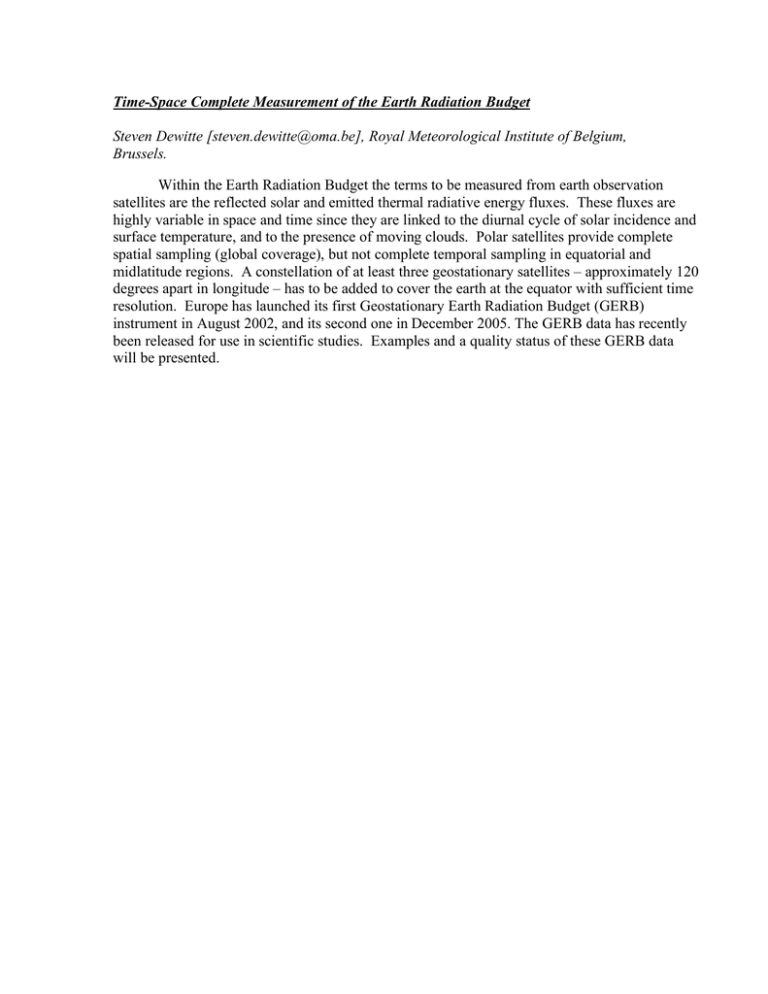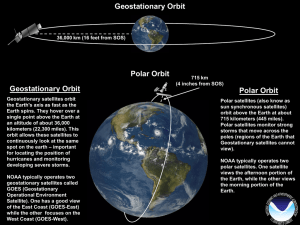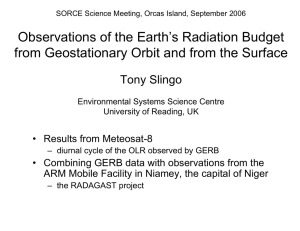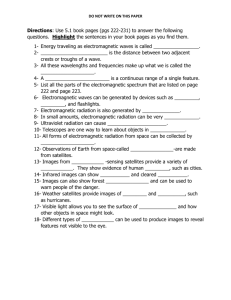Time-Space Complete Measurement of the Earth Radiation Budget
advertisement

Time-Space Complete Measurement of the Earth Radiation Budget Steven Dewitte [steven.dewitte@oma.be], Royal Meteorological Institute of Belgium, Brussels. Within the Earth Radiation Budget the terms to be measured from earth observation satellites are the reflected solar and emitted thermal radiative energy fluxes. These fluxes are highly variable in space and time since they are linked to the diurnal cycle of solar incidence and surface temperature, and to the presence of moving clouds. Polar satellites provide complete spatial sampling (global coverage), but not complete temporal sampling in equatorial and midlatitude regions. A constellation of at least three geostationary satellites – approximately 120 degrees apart in longitude – has to be added to cover the earth at the equator with sufficient time resolution. Europe has launched its first Geostationary Earth Radiation Budget (GERB) instrument in August 2002, and its second one in December 2005. The GERB data has recently been released for use in scientific studies. Examples and a quality status of these GERB data will be presented.




